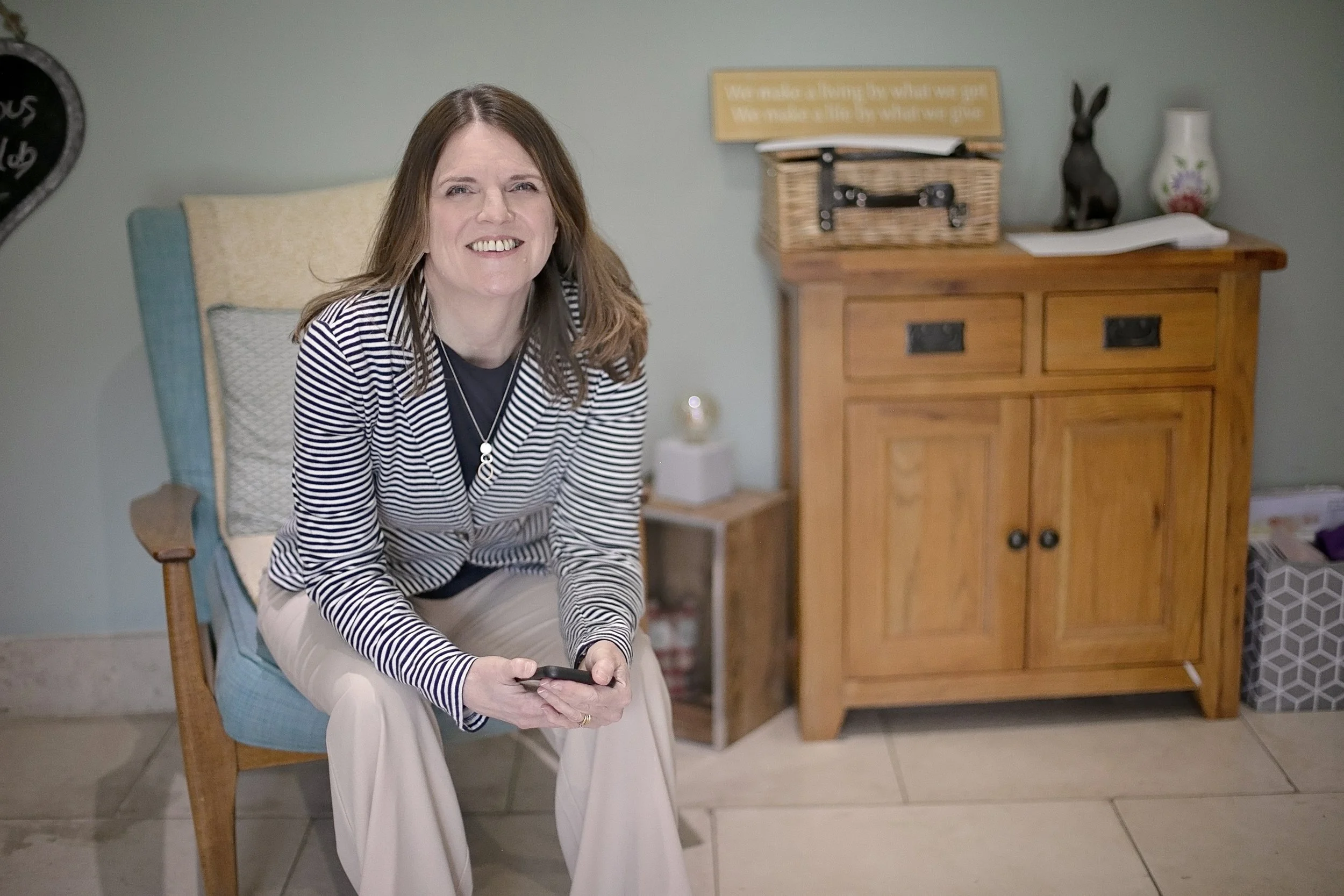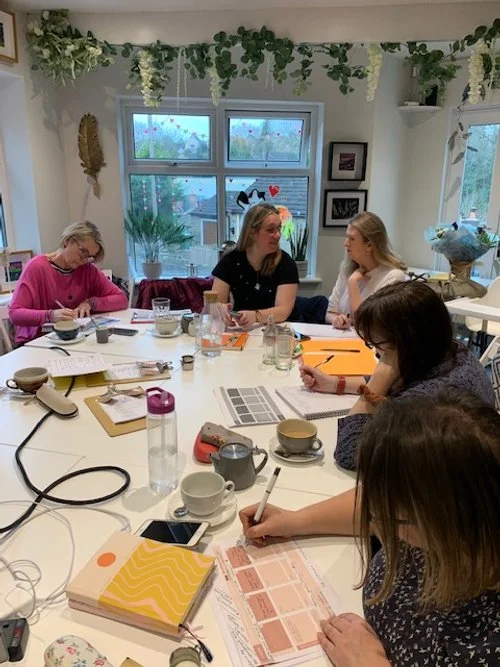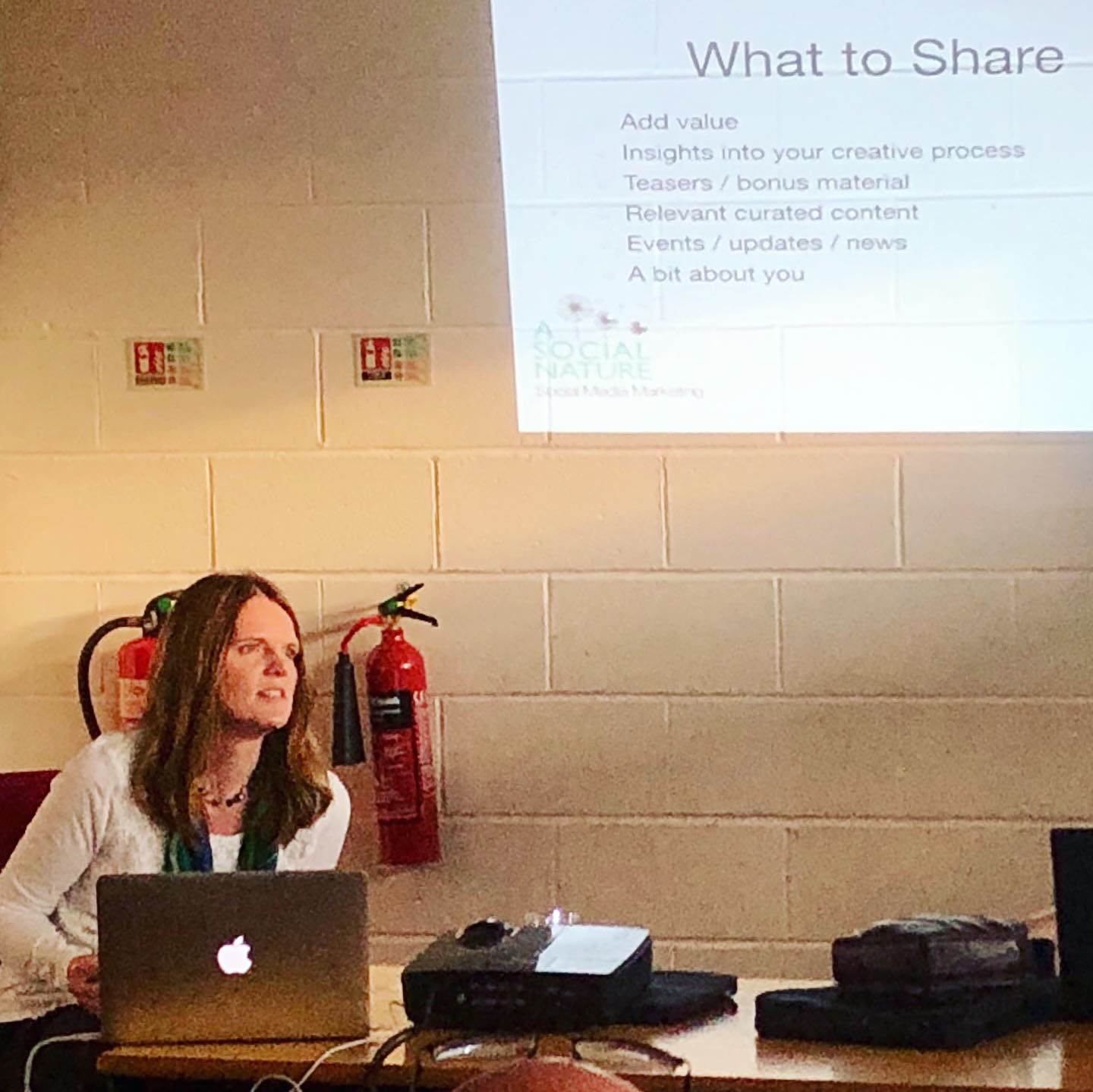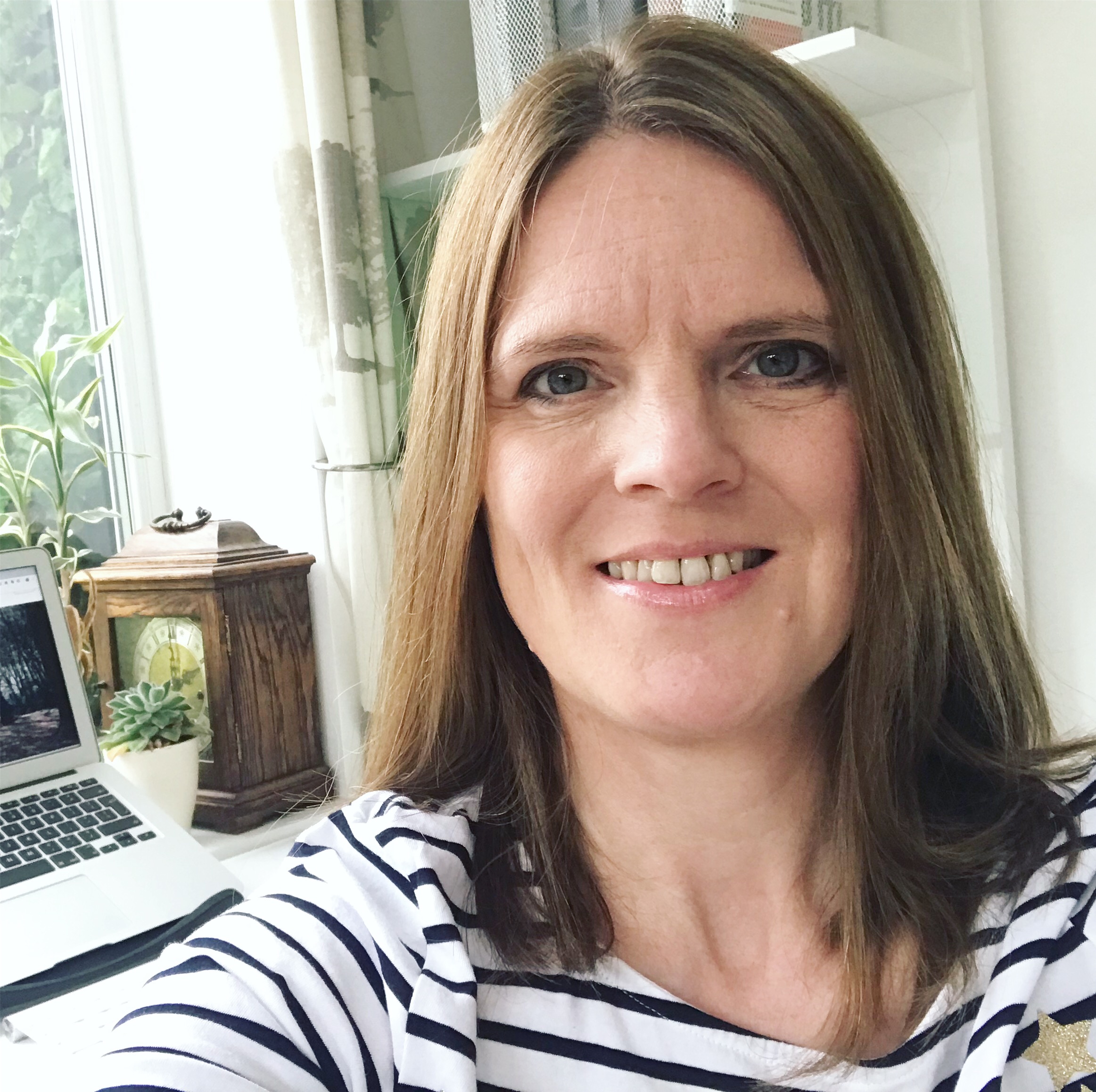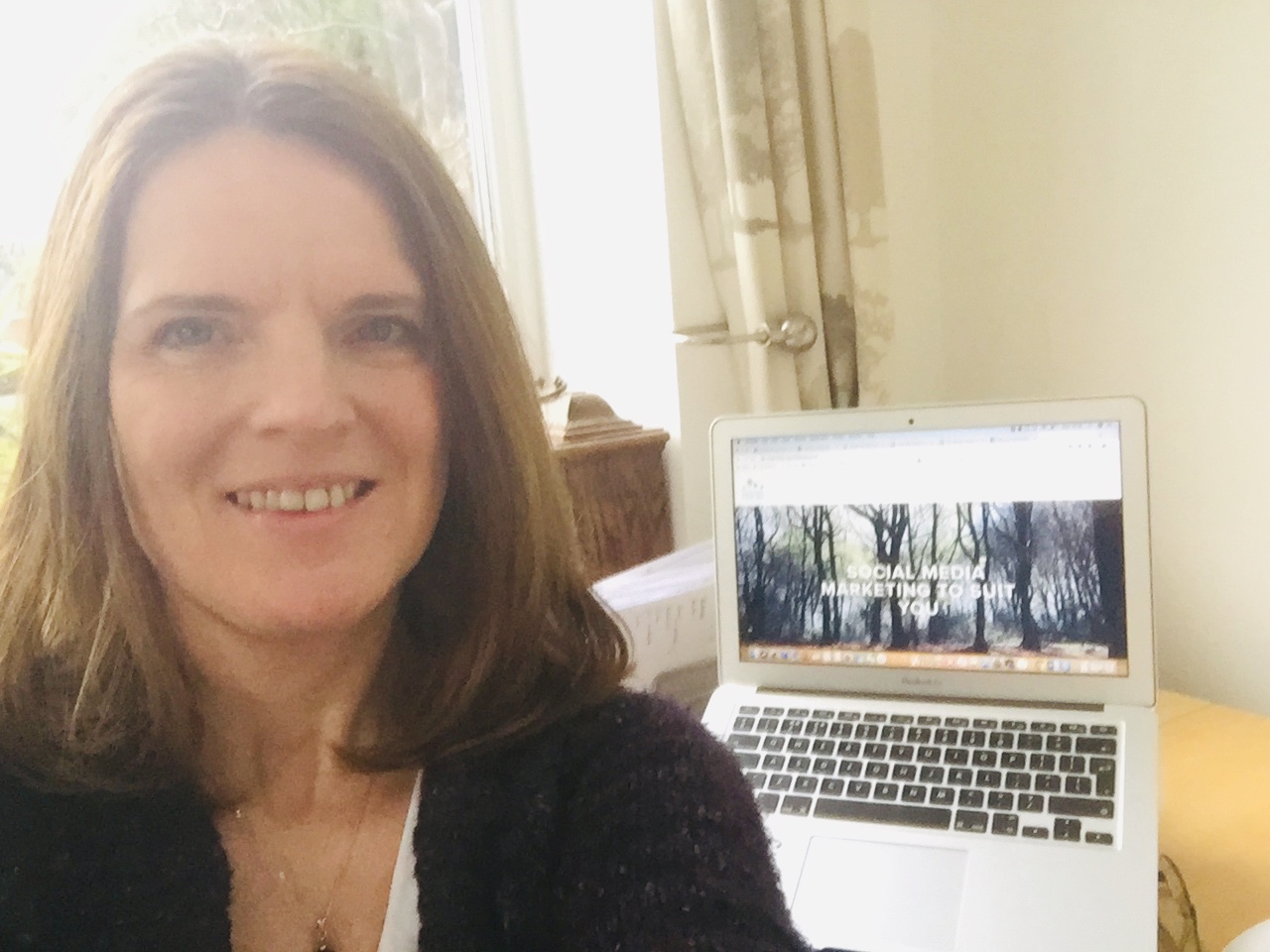I went to Atomicon for the first time. I share my 3 big mistakes and my top tips for first timers.
How to launch a programme: Hypnotherapy Case Study
Case Study: Promotions without discounting
When you are a course creator, it’s easy to get into a rhythm of offering regular discounts on your course during the year.
But can you run promotions without discounting? And what’s the benefit?
Downsides to discounting
Offering a discount at Christmas, Summer, Black Friday, or on your birthday, seems like a quick win. You can send out a stack of emails to your list, maybe even run some Facebook ads, and you’ll definitely get some sales. And sales = money in the bank.
BUT - if your discounts become too predictable, why would anyone buy your course at the full price? If people in your audience have been on your list for a little while, they will soon pick up that if they hang around for long enough, a discount will come along. It might even start to feel a little disingenuous, if barely anyone pays the full price. It’s like one of those furniture stores with the permanent sale (which always ends on Monday…).
This was the challenge with my client. All recent promotions have offered the same discount of 40% on the membership price. In this case, access to the course was a via membership which renewed annually. Members stayed on the price they joined with - so if they joined with 40% discount, they kept this discount every year.
So, we decided to test an alternative offer.
Lifetime Membership
After discussions with the client, we decided to test a Lifetime Membership offer. This was an attractive offer to test for a number of reasons:
We could offer Lifetime to existing annual members as well as non members
It didn’t represent a discount but was still appealing to customers who planned to stay in the membership for more than 3 years
Lifetime is based on an existing product so didn’t involve creating anything new (e.g. such as a standalone, single purchase).
The strategy
We chose to promote the Lifetime Membership with a short, sharp email campaign. We decided to offer a limited number of Lifetime Memberships at an introductory “founder” price, which introduced both scarcity, urgency and exclusivity to the offer.
We also chose to offer this initially to current members, to convert their annual or monthly membership to Lifetime. Then, a further 4 emails were sent to the full list (members and non members).
The messaging
I developed a number of copy ideas and angles, focused on the benefits to customers of Lifetime membership, and using our customer avatars.
These emphasised advantages such as locking in a lifetime of access with one payment, insuring against unexpected financial hiccups down the track. The messaging also appealed to the desire to really commit to learning, and being in it for the long run. I also used real student stories of achievements through the program.
The client used these in the sales page and video.
The email campaign
I wrote sales emails to the campaign; 3 for existing members (including a presale email) and 4 to non-members, using the copy ideas I had discussed with the client.
The Metrics
Emails to existing members achieved high open rates (60% average) and high click rates (16% average).
The emails to the full list (members and non members) achieved a great average open rate of 34%, and average click rate of 1.5%.
The Results
Total number of sales from campaign: 82
Total revenue: $81,754.00
Sales to existing members: 73
Sales from new members: 9
Purchasers loved the “Lifetime” concept and described themselves as “Lifetime” members in the Membership Community.
The client was delighted with these results for a brand new offer.
Client Testimonial
“Clair has helped my business massively for the past few years with email and blog copy that truly engages our customers. Her emails for our most recent campaign saw open rates up to 59% that generated £80k+ in revenue in just 4 days!”
Thinking of testing promotions without discounting? Get in touch to discuss how we can work together.
How I Rebranded my Business
During this year I have been quietly rebranding my business.
Not just rebranding. Refocusing.
I say that, because it wasn’t a complete pivot into a whole new area of work. This was work I was already doing for my clients - I just wasn’t really talking about it or offering it to new clients.
Ironically though, this was the work I enjoyed most.
Resistance
Rebranding wasn’t a completely new idea. It had been creeping into my thoughts for a while, but I had been resisting making the change. Was it an admission of defeat to stop doing some areas of work, before I just didn’t love it anymore? (I can be stubborn).
And then there was the fear. Rebranding sounded like it might be too hard.
But if you are thinking of rebranding your business, it’s definitely do-able. Here’s how.
Rebranding Steps
Having finally decided I needed to do this, I “brain dumped” all the different parts of my business I would need to change. In no particular order:
Business name
Website
Domain name
Email address
Logo and branding
Social media accounts
My offers
First, I mapped out what I wanted to offer, because this would help me write the copy for my website. This part is always tricky. But it’s important to remember that this isn’t set in stone. Every client is different, and so often I will come up with a bespoke package for them after an initial conversation.
I decided to use my own name for my business name, and my domain name. My previous business name was very specific to the work I did, which made refocusing more difficult. I decided that my own name gave me flexibility and simplicity.
I bought the domain name and linked it to my website as a secondary domain while I completed the changeover. Then I switched it the primary domain when I was ready.
I created my logo and branding (hello Canva!) and picked headshots that I could use on my website.
Switching my social media accounts to my new name was surprisingly easy and straightforward.
There are still a few loose ends to tie up - but I’m u and running in my new direction and it feels good!
rebranding Lessons
The process has taken me longer than I expected, as I’ve been fitting it in around existing client work.
But most of the steps above have been easier than I expected, too. There wasn’t much that I couldn’t figure out with Google.
When I got stuck creating my new email address and linking it to my domain, Google Support were amazingly helpful and even got on the phone to talk me through it.
I decided against getting new business cards printed. The truth is, I still have lots of my existing business cards which tells me I don’t use them all that much. So, I’ve gone for a digital business card, which I created using HiHello. It’s easy to use, and I can easily make changes without another trip to the printers.
Setting goals and accountability
Getting this done has been a challenge. But all the way along, WOW Team have supported and encouraged me. Our sessions have been a safe and supportive space to talk through the steps I’ve taken and what I need to do next. They have offered suggestions and helped me organise my thoughts. They have cheered me on and celebrated the little wins.
Tips for rebranding your business
If you are thinking of rebranding, here are my top tips for a painless process.
Map out what you need to change first.
Tackle it a bit at a time - don’t try to do it all at once.
Don’t worry too much about the “messy middle”. No one will really notice if your website looks a little untidy for a short while.
There’s not much you can’t figure out, and help is out there if you ask for it.
Find support and accountability to help you set goals and share your achievements.
Find out more about WOW Team and how we can support you here.
How to Create your Ideal Customer Profile
Do you have a clear picture of your ideal customer?
Creating your ideal customer profile doesn’t have to be complicated. But if you understand your perfect customer, many aspects of marketing your business will be much easier.
Whether it’s reaching potential customers through advertising, or writing your website copy, or communicating with your team - a customer profile, or customer avatar, will help.
You can keep it simple, or get really detailed. It’s a great idea to create several profiles to represent different aspects of your target audience.
Here are some essential questions to get your started.
The Simple Stuff
Are your customers typically male or female? What age are they? Try and get specific. Give your customer a name!
Family
Who does your customer live with? Are they married? Do they have children, and if so, how old are they? Facebook™️ Ads audiences allows you to target parents of school age children, or teens, for example.
Location
Where does your ideal customer live? If you are a local business with a bricks and mortar shop, how far do your customers travel to buy from you? If you are an online business, are your customers in the UK, Europe, or beyond?
Passions
What are they into? This is where it can get interesting! Think beyond the obvious. So, for example, if your business offer sustainable bags and accessories, maybe your ideal customer is also interested in recycling, composting, electric cars, or other eco-brands. Maybe they are interested in upcycling or crafting. Do they support a particular charity? Where do they go on holiday? These insights can help you share content that is valuable and relevant.
Shopping Habits
Where do they shop? For food, clothes, gifts… it’s a great idea to have a picture of other brands your ideal customer would buy from. Look at the marketing these brands use for inspiration and ideas. Just as importantly, where would your ideal customer definitely avoid?
Reading Matter
Which magazines or websites does your ideal customer read? This is another great source of inspiration, but it’s also a guide to the tone of voice which will appeal to your customer. Do they go for light-hearted or sensational? Serious or funny? Chatty or thought-provoking?
Motivators
What makes your ideal customer buy from you? Is it great service, a unique product, value for money? Or something else?
Barriers
What might hold them back from buying? Think about how you can overcome these in your messages.
Over to you!
I hope you find these ideas useful when you create your ideal customer profile. Don’t forget, you will probably need to create more than one, and you might want to revisit them now and again to see if they need updating. But keeping your ideal customer in mind when you are planning the marketing for your business will help you reach them more effectively.
Need more help creating your ideal customer profile? Get in touch with me for a chat!
How to Repurpose Your Content
When you have created some great content, you’ll want to squeeze every last drop of value from it.
Here are my top tips for how to repurpose your content.
Write a blog
Long form content such as blog articles give you loads of scope for repurposing, so it’s a great starting point.
Promote your blog
Now you’ve got your great blog, you'll want to tell your audience about it, so they can go and check it out! Write about it in your newsletter, or send out an email to your list. Share the link to your blog in your social posts.
Turn it into a video
Social platforms love video, and the short form videos such as Instagram Reels (now also on Facebook), YouTube Shorts, or even TikToks, are a great way to reach new people. Give your audience a taste of your blog, then tell them where to find it to read more. Don’t forget to make some super-short videos for Stories too.
Chop it up
If your blog is “5 tips for….”, you can share your tips separately as social posts. Do this over a few weeks or months to catch new followers who might not have seen your original blog. Create “quote” posts from valuable snippets from your blog.
Ask your audience
If you’re stuck for ideas for your next blog, ask your audience what they want to know. Questions make great social posts - you could even create a poll and then share the results.
Keep it updated
Review your existing blog posts every few months and update anything that’s changed. You might even get inspiration for a whole new blog!
Bank it
It’s great to have a bank of “evergreen” content which stays useful and relevant, that you can share on your different platforms throughout the year. You never know when it might come in useful for a workshop, podcast, or something else!
Need help writing blogs? It’s one of my favourite things to do - so get in touch!
Social Media Tips: 6 Numbers You Need to Know
11 Things You Need to Create a Business You Love
There’s a lot of noise out there about how to create a business - but how do you do it in a way that feels right for you?
When you decide to create a business, it’s a big step. And if it’s going to succeed, your business needs to fit your life and what’s important to you. And that’s unique!
Here’s 11 things that will help you create a business you love.
1. Find Your Why
If you are clear about WHY you are creating a business, its purpose and what it will do for your life as a whole, you will feel more motivated to prioritise it.
2. Set Goals
These are the steps you need to take to get you to where you want to be. They should be realistic and achievable - and measurable. How will you know when you’ve got there? It’s a great idea to share your goals so keep you accountable. If you say them out loud, and tell report back on your progress, it really focuses your mind.
3. Find your Tribe
Creating a business can be lonely, so finding people who “get it” and have been on the same journey can really help. Find people who will cheer you on and encourage you along the way - and do the same for them too. Good vibes all round!
4. Celebrate your Wins
Whether it’s your first sale, getting your website up and running, or a great review - celebrating your wins, big or small, is a great motivator. Make sure you stop and appreciate them, before you move onto the next thing. Celebrate your awesomeness!
5. Find Support for the Tricky Times
As well as wins, all businesses have bumps in the road and times when things don’t go to plan. Share these with your tribe too, so they can support you to get back on track.
6. Learn From Others
You can’t do everything alone. There's so much to learn when you create a business. Learn from the experience and skills of other like-minded people, and share yours too. It’s a great confidence booster.
7. Invest in Your Confidence
This is so important. Work on your mindset. Spend time with people who make you feel good and who boost your confidence and self-belief. Steer clear of people who don’t.
8. Be Authentic
You are unique and so is the business you are creating. Grow a business that works for you and is true to you. Don’t get distracted by comparing yourself with others.
9. Do What Feels Right
Don’t feel pressured to do things that you’re uncomfortable with. If networking is not your thing, find another way to meet potential clients and connections.
10. Make Your Business Fit Your Life
You are a whole person, so create a business that works as part of your life. Set boundaries so that you there' s space for your other priorities and the things that bring you joy.
11. Get Feedback
Find a sounding board of people who’s opinion you value. Ask them to give you honest feedback on ideas or products, or even be your guinea pigs for a workshop you are planning.
Now you might be reading this and thinking, ‘that sounds great - but how do I find all of this?’
This is where WOW comes in.
WOW began as an accountability group, but in the last 3 years it’s become much more than that.
It’s about supporting each other, finding and setting goals - and celebrating wins together.
It’s a place to be honest, to share your fears and get encouragement from people who get it.
WOW is not networking - but connections and collaborations happen organically. That’s the WOW magic!
Find out more about WOW and how it can help you in your business, here.
9 Tips for Writing Your Story
We all know that we tend to buy from people and businesses we know, like, and trust.
Telling your story is one of the best ways to build that relationship with your potential customers and clients. Whether it’s the “About Me” page on your website, a blog post, an article, or even a podcast, your story is key to your business.
If people can identify with your story, they will feel involved, invested, and hopefully will want to support your business.
Here are my 9 tips to get you started.
1. Which story?
There’s lots of stories you could tell, and once you get started, you might want to tell them all! If you’re not sure where to start, think about:
· Your journey – what brought you to starting your business? Was there a moment that sparked the idea? Or did it evolve?
· Your “why” – do you have a passion to help people, create something new or change the world? Why do you do what you do?
· Your values – What are the qualities that are at the heart of what you do, and why are they so important?
2. Know your audience.
Picture your ideal customer or client. What brought them to you? What is it about your business that they love? This will help you to find the element of your story that your audience connects with.
3. Talk it over
A blank computer screen or notebook can cause your brain to empty immediately! If you don’t know where to start or what words to use, try this.
Ask someone to “interview” you. This could be a friend, your partner, or a work connection who you trust.
Take notes, or even better record it, using your phone, or Zoom.
If you don’t want to talk to a real person, try speaking your story out loud and recording it. This will really help when you start writing.
4. Don’t over-think it
You might have a clear idea about what you want to include in your story. But it’s a great idea to leave yourself some freedom and see where the conversation takes you - it might surprise you.
5. Get anecdotal
Sometimes, incidents from our lives can have a big impact on our values or our direction. It could be an experience at school, in a previous job, or within your personal life.
Including anecdotes in your story can be a really powerful way to hook in your audience – you might even want to start your story with a real-life incident.
6. Use your own words
Faced with that blank sheet of paper, you might hear the voice of your school English teacher loud in your ear! But you’re not writing an essay here. Listen back to your recording and use your own words. That way, your story will come across as authentic, natural and relatable.
7. Keep it short
People are busy and attention-spans are short, so keep your story focussed. It’s better to write 300 really compelling words, than 1000 words that ramble. If there’s too much to say, break it up into several shorter posts.
8. Inspire action
What do you want your audience to do after reading your story? Do you want them to follow you on social media, send you a message or book a call? Where can they read more about you and what you do? Make it really easy for potential customers to take action.
9. Be visible
This is your story, so your audience want to see you. Make sure you’re got some great photos of you to include in your piece. These could be headshots, or photos of you in your workspace, or even outside. Your pictures should contribute to your story so choose images that capture the “real you”.
I love helping my clients to tell their story in a way that is right for them and their business. If you would like me to help you tell your story, get in touch.
Finding Lynda's Story: A Case Study
Lynda wanted her story to show how the different aspects of her work connect, in her holistic approach to her clients.
Background
Lynda is a nurse, counsellor and practitioner in manual lymphatic drainage - a specialist form of massage.
Lynda has had a rich and varied life, and her experience, and the challenges she has faced, play in an important part in her story.
The Process
Lynda and I met over Zoom for a conversation lasting around 90 minutes. After visiting Lynda’s website I had an overview of the different strands of her work but I was interested to find out more about how she had come to train in these different fields. I like to see where the conversation leads, so I didn’t approach our meeting with a fixed set of questions in mind.
I began by asking Lynda how she came to train as a nurse, and her answer was a surprise! This led to a fascinating exploration of Lynda’s childhood growing up in Zimbabwe, and her adult life split between Africa and the UK.
The theme of change, and the need to adapt to new challenges and circumstances, emerged very strongly, and this became the focus when I drafted Lynda’s story following our conversation. I used the recording of our Zoom meeting to help me to capture Lynda’s voice in her vivid descriptions of her experiences.
After Lynda had read her draft story, we had a further meeting over Zoom to discuss any changes.
Lynda’s Feedback
‘Clair has done a lovely story about me, she listens carefully to my style of communication and emulates it in her writing of the script so it sounds very much like I have written it.
She magically weaves together a coherent narrative that is both engaging and sensitive.
I highly recommend Clair to her potential social media clients for her skilful way to describing and writing stories for their pages.
Thank you Clair for writing mine.’
Extracts from Lynda’s Story
“My life has taken many twists and turns, and nursing has been a constant throughout. Through two marriages and three separations, nursing has enabled me to support myself and my two daughters. The other constant in my life has been change, and I have often needed to adapt and find the positive in difficult situations. These experiences and challenges have brought me to where I am now and to what I offer.
“I didn’t know how I was going to pay for [the Manual Lymphatic Drainage course] but I decided I would jump off the cliff and build my wings on the way down …
However, I qualified, and began my practice. I believe that once you have this kind of training, the universe will provide you with people to help, and since then, wherever I have lived, I have always found new clients who need my skills. “
If you would like to work with me to find YOUR story, find out more here or contact me to chat.
Find out more about Lynda’s work on her website: connect with Lynda on Facebook and Instagram.
Finding Nigel's Story: A Case Study
5 Tips for Working From Home
Since we’re all #stayingathome at the moment, this might be the first time you’ve worked from home.
As a freelance social media manager, I work from home all the time. So, in many ways, not much has changed in our current situation, except now the rest of the family is at home too!
If you’ve not worked from home before, it can be a challenge. You might find it difficult to stay motivated. You might find it difficult to switch off.
Here are my 5 top tips for working from home. Let me know if they help you!
1. Make space
Whether it’s the spare room, a corner of the kitchen, or the garden shed, you need to claim some space to work. Ideally, try and find a place where you can leave out the things you need, so you don’t waste time setting up before you start work. Ban other family members from dumping stuff on your desk!
Think about your posture too. A sore back or neck doesn’t with productivity.
2. Get dressed
We’ve all been there - you realise you’re sat at your desk in your PJs and it’s nearly lunchtime! You’ll feel more focussed if you get dressed, ready to start your day.
Bonus - you can probably skip the make-up and keep your slippers on!
3. Make a plan
If you’re juggling home schooling, meal times, daily exercise, and entertaining the kids as well as work, it can feel overwhelming. You can feel as though you’ve achieved nothing at all.
I find it really helps if I make a plan, so I decide when I’m going to work, and when I’m not. It also works well if I write down what I want to achieve during the day, and when I’m going to do each task.
Be realistic, and tick off each task as you go.
4. Set Boundaries
This is a tricky one when you’re working from home. It’s just too easy to drift back to your laptop to check on emails, or to finish something. You can get to the end of the day and feel all you’ve done is work!
This is especially difficult when the kids are at home, because you feel guilty about not spending time with them.
Set yourself clear boundaries. Decide what time you’re going to stop work, then turn off the lap top or put the phone away.
5. Celebrate your wins
At the end of the week I check in with my accountability buddies and we share our successes. Big or small, it’s important to take time to reflect on what you’ve achieved - so try setting up a WhatsApp group with your colleagues or friends so you can check in and share your progress.
When you’re working at home this can really help you stay motivated.
There are lots of things I love about working from home, like taking my coffee into the garden, and setting my own routine. But it can be tricky too. Let me know if these tips help you.
What has helped you with working from home?
Social Media Tips: Join a Hashtag Challenge
Social Media Tips: Responding to Comments
How do you respond to comments on your social media posts?
It goes without saying that you should always respond - and preferably as soon as you can.
If possible, try to encourage conversation - answer their comment, and then perhaps ask a question. That way, your other followers might join in too - great for engagement.
Customer Service
Many people now see social media as a route for their customer service queries - so comments can be about everything from your opening hours, to product availability. They might even include negative comments or complaints. So how should you deal with those?
No one wants to have a length interaction with a disgruntled customer in a public place such as a social media feed
Dealing with Grumbles
No one wants to have a length interaction with a disgruntled customer in a public place such as a social media feed. The last thing you need is other followers chipping in, and an audience can often raise the temperature of the conversation in an unhelpful way.
However, it is important that you are seen to respond, and how you do this can have a lasting impact on how your customers, and potential customers, perceive your business.
So, this is what I find works well.
Respond quickly to the comment in a positive way (even with a little humour if that’s appropriate)
Take it away from the public feed - say something like “I’m really sorry you’re unhappy - I’m going to contact direct so we can talk about how to fix that for you.”
Then direct message or email the customer to deal with the detail of the problem.
Plan Ahead
Sometimes the person dealing with day to day with your social media may not be able to deal with a complaint themselves. It’s a good idea to have a simple process in place. This might include:
What they can agree with the customer themselves, there and then
Who to pass a complaint to, if it needs escalating to someone more senior
Agreed response times - so they can tell the customer when to expect an answer.
Happy Customers!
Hopefully, the customer will be so delighted with your response, that they will post a great comment to say thank you!
Social Media Tips: Post with Purpose
What do you want your social posts to achieve for you?
When you are busy running a business, it’s easy to feel as though social media is just ANOTHER THING for you to fit into your day.
It’s the middle of the afternoon, and you suddenly remember, with a sinking feeling, that you haven’t posted anything today - and you promised yourself you would.
So you sit there, scrolling through your photos, racking your brains for something - anything - to post.
Sound familiar?
Having a bit of a plan for your social content can really take the pressure off. Instead of feeling like a burden, your posts can start working for you.
So, what do you want to share with your customers, and potential customers? What do you want them to know about your business?
Behind the Scenes
People love to get an insider view - we all pretty nosy, after all! So, posts about your working day, your team members, your workplace, are likely to go down well with your audience. Take photos throughout the day. Try giving the to different team member each day, to get a new perspective on the life of your business.
Inspiration
Have you got a new product you want to promote? Is your business changing in an exciting way? Share the inspiration behind these developments.
Where did the idea for the product come from?
How did it evolve?
Why is your business changing and what will it mean for your customers?
Sharing these stories helps people to feel involved in your business.
Research
Why not use your social posts to get ideas and opinions from your followers. People like be asked, and are more likely to feel they have a stake in your product if they feel they’ve been part of the process. It’s easy to create a poll, or just ask a question, and get feedback that can be really valuable to your business.
A bit about you
People love to get to know the person behind a brand or business - it helps to build a sense of connection and engagement. So think about sharing:
Why did you set up the business?
What did you do before?
What inspired the values of your business?
Your passions and interests
A bit about your daily life
You!
You might feel a little awkward about sharing photos of yourself, but people really like to see the face behind the business.
If you really don’t like having your photo taken, (and you’re not alone!) why not think about having a photo shoot with a branding photographer? You’ll get a whole set of great, professional photos which will provide you with content for many months.
Otherwise, a selfie will be fine!
Do More of What Works
By posting different types of content, you will be able to see what resonates with your target and audience.
Do you get more comments on posts where you ask a question?
Do your followers love to see behind the scenes?
Do shots of products do better when they shown being used in a real setting?
Do staged, aspirational shots perform best?
Once you can see which type of post gets the most engagement, you can plan to include more.
Post with a Plan
If you are clear about what you want your social media posts to do for your business, you will feel more confident about your content and more importantly, you will start to see results!
If you would like more help planning your social media content, with personalised tips for your business, get in touch!
Five Things I Love About My Work...
Social media is still quite a new area of work. When I tell people what I do, I occasionally get this reaction: “What? That’s a job?”
So I thought I would write about my work, and more importantly, what I love about it!
1. Variety
I work with several different clients who all have very different businesses. No two days are the same, in fact, no two hours are the same! Switching between work for different clients keeps me on my toes.
2. Meeting my clients
I am naturally curious and I love finding out about my clients – learning about their customers and their services, and turning all that learning into a social media strategy that works for them.
3. Writing
I’ve always loved writing, and words, and there’s a lot of that in this job! When I’m writing social media posts for my clients, I’m trying to use the right tone that matches their business and that will appeal to their customers, as well as keeping the posts interesting, and short!
For some of my clients I also write blogs for their websites. This gives me the chance to explore a topic in more depth, because I have more space to write about it. Blogs are a great for showing your customers “behind the scenes” of your business, or giving them useful tips on how to use your product. And blogs are really shareable on social media platforms too.
4. Creating
As well as writing, I love taking photos and creating graphics to use on social media.Using images that are in line with my clients’ branding are an eye-catching addition to a feed – great for quotes, or customer testimonials.
5. Results
I can be a bit of a geek when it comes to numbers! I collect data for all my clients to see what’s working, and what we need to change. I’ll be looking at which types of content get the best engagement, or which posts lead to the most clicks through to the client’s website, for example It’s all about testing, and learning from the results, to get the most from my clients’ social media budget. . And of course, it’s really satisfying to see when content does well!
Contact me to find out how I can help you with your social media presence.




